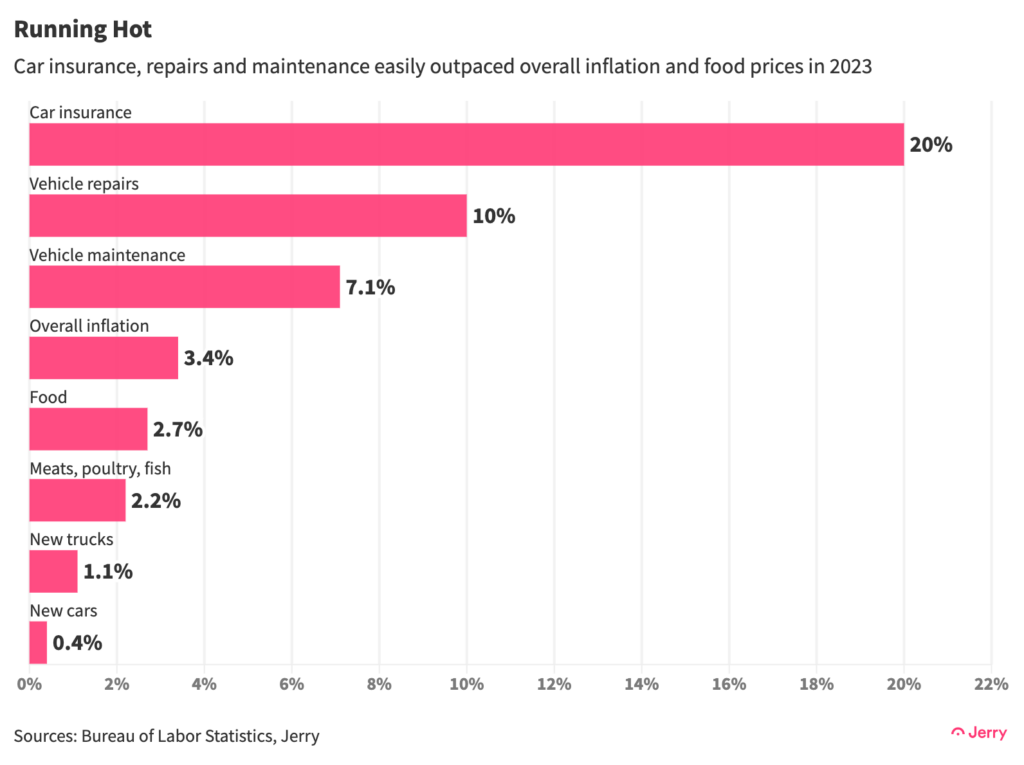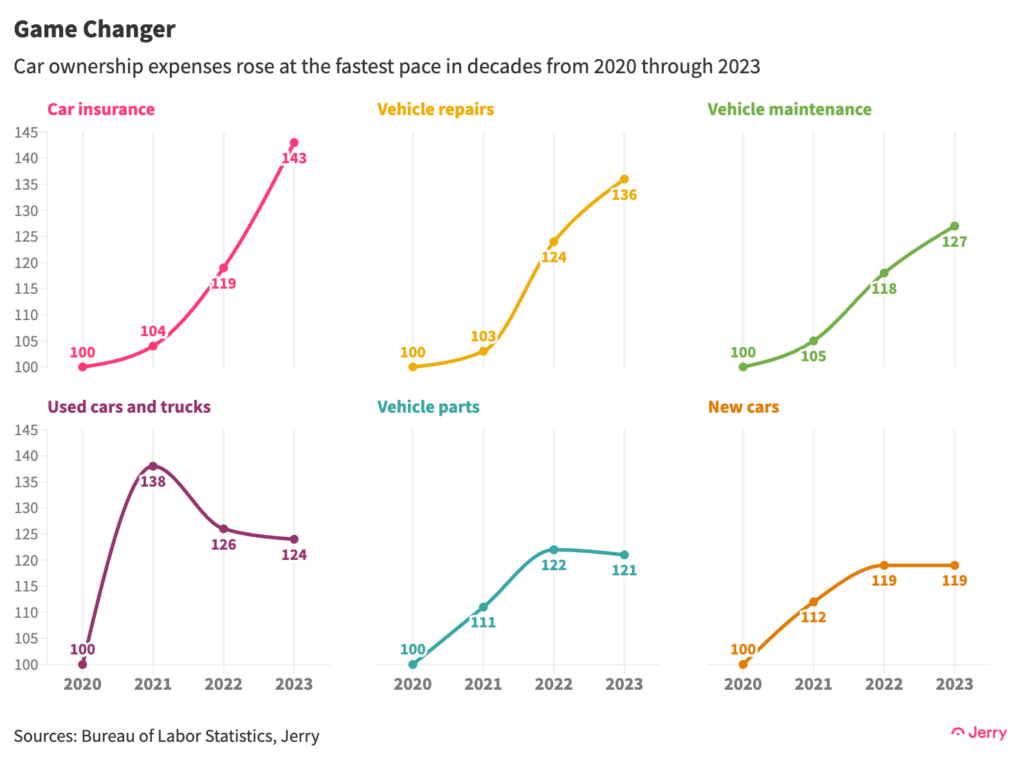The costs of insuring and repairing your car rose faster than any food item at your local grocery store in 2023. In fact, those expenses have risen more than any food item over the past three years.
Though grocery shopping remains painful for most Americans after the worst bout of inflation in decades, the biggest jumps in food prices appear behind us. Yet prices for three key car-ownership expenses—insurance, repair, and maintenance—are still soaring.
Car insurance has been rising at the fastest pace in four decades, jumping 21% in January from a year earlier. That’s more than six times faster than overall inflation. Repair costs jumped 7.9% and maintenance costs jumped 6.5%, both twice as fast as inflation.

Key Insights
- Jerry found that car insurance and repairs rose faster than any grocery food item on the Bureau of Labor Statistics’ consumer price index in 2023.
- Car insurance rose 20% in 2023, the fastest pace in at least four decades and six times faster than overall inflation. It is now up 43% in the three years through December 2023.
- Car repair costs rose 10.3% last year, three times as fast as overall inflation, while vehicle maintenance costs rose 7.1%, twice as fast as inflation.
- Car insurance (+43%) and vehicle repair costs (+36%) rose faster than all food categories in the three years through December 2023, thanks partly to the price of eggs plummeting 24% in 2023. Both insurance and repair costs rose twice as fast as overall inflation (18%) during this time period.
- Between December 2020 and December 2023, vehicle maintenance (27%) and used vehicle prices (24%) outpaced all food items except eggs.
- In the three years through December 2023, the annual rate of price increases for major car ownership expenses—insurance, new and used vehicle prices, repair and maintenance, and parts—all hit multi-decade highs. New cars and used cars and trucks jumped by the most since at least 1954.
Still Soaring
Anyone who paid a car insurance premium last year could be forgiven for scoffing at the news that the U.S. Federal Reserve is close to achieving its mission of containing inflation. Soaring insurance premiums forced nearly a quarter of drivers to buy less coverage than they thought they needed in the last 12 months, and three out of four Americans say car insurance is becoming unaffordable for the average person.
The best you can say about car-ownership expenses at the start of 2024 is that prices for vehicles have stabilized after jumping at record rates in previous years. Used vehicles even dropped slightly (-1.3%), as did vehicle parts and equipment (-1.2%).
But that’s cold comfort when it comes time to pay the bills. Every major car ownership expense except gas is dramatically more expensive than it was just three years ago, including used cars and trucks (+24%) and new cars (+19%).

Conclusion
There is likely further pain ahead when it comes to the three fastest-rising car-ownership expenses—insurance, repairs, and maintenance.
While the cost of vehicle parts stabilized last year, maintenance and repair costs are also driven by the growing use of advanced, pricier technology in vehicles and a shortage of qualified technicians to service and repair that technology. This is a long-term problem.
The huge rise in insurance rates has also been driven by a number of factors. Americans are now driving more than they were before COVID struck, and the number and severity of accidents has increased. Throw in sharply higher prices for vehicles, vehicle parts and repairs and you have a recipe for steep increases in the value of claims and premiums.
Insurers have been playing catch-up with premium increases since inflation broke loose, which explains why premiums rose dramatically last year even as overall inflation cooled. The current rate-hike cycle is likely winding down but higher premiums are here to stay. That’s expected to prompt record numbers of people to shop around and switch insurers.
Methodology
All price data are taken from the U.S. Bureau of Labor Statistics. Annual inflation data were calculated by comparing December prices versus the prices in December a year earlier.

Henry Hoenig previously worked as an economics editor for Bloomberg News and a senior news editor for The Wall Street Journal. His data journalism at Jerry has been featured in outlets including CBS News, Yahoo! Finance, FOX Business, Business Insider, Bankrate, The Motley Fool, AutoWeek, Money.com and more.







